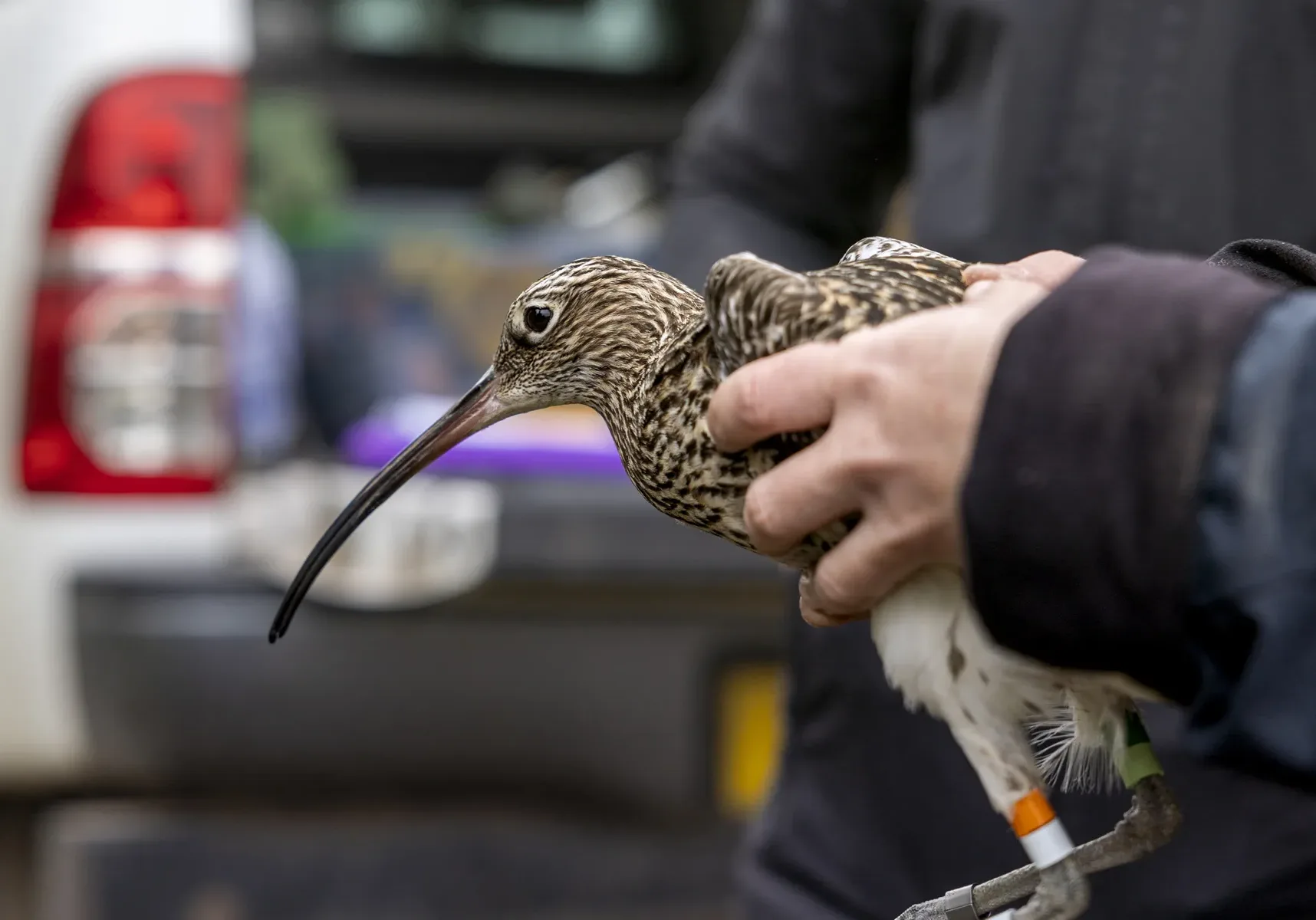
The Story of Curlew Tagging
by Josh Swarbrick
We chat to Dr Samantha Franks, senior research ecologist at the BTO whose unwavering passion for wader birds has enabled her to dive deep into the world of curlew conservation, and Rich Bunce, award-winning photographer who joined Sam and her team for a day in the Dales to photograph their last day of curlew-tagging fieldwork.
Back in April 2023, researchers at the British Trust for Ornithology (BTO) embarked on an important curlew conservation project in the Yorkshire Dales, fitting a select number of the birds with GPS tags to help build a clearer picture of the potential causes for the species’ decline.
In 2015, curlews, the largest European wader bird, were added to the ‘Red List’ of the UK’s Conservation Status Report, officially classifying them as an endangered species. With a rapid population decline in the past 20 years that has caused the number of curlew breeding pairs to fall by almost 50%, the BTO’s extensive research into and dedication towards conserving wild bird species is more important now than ever.
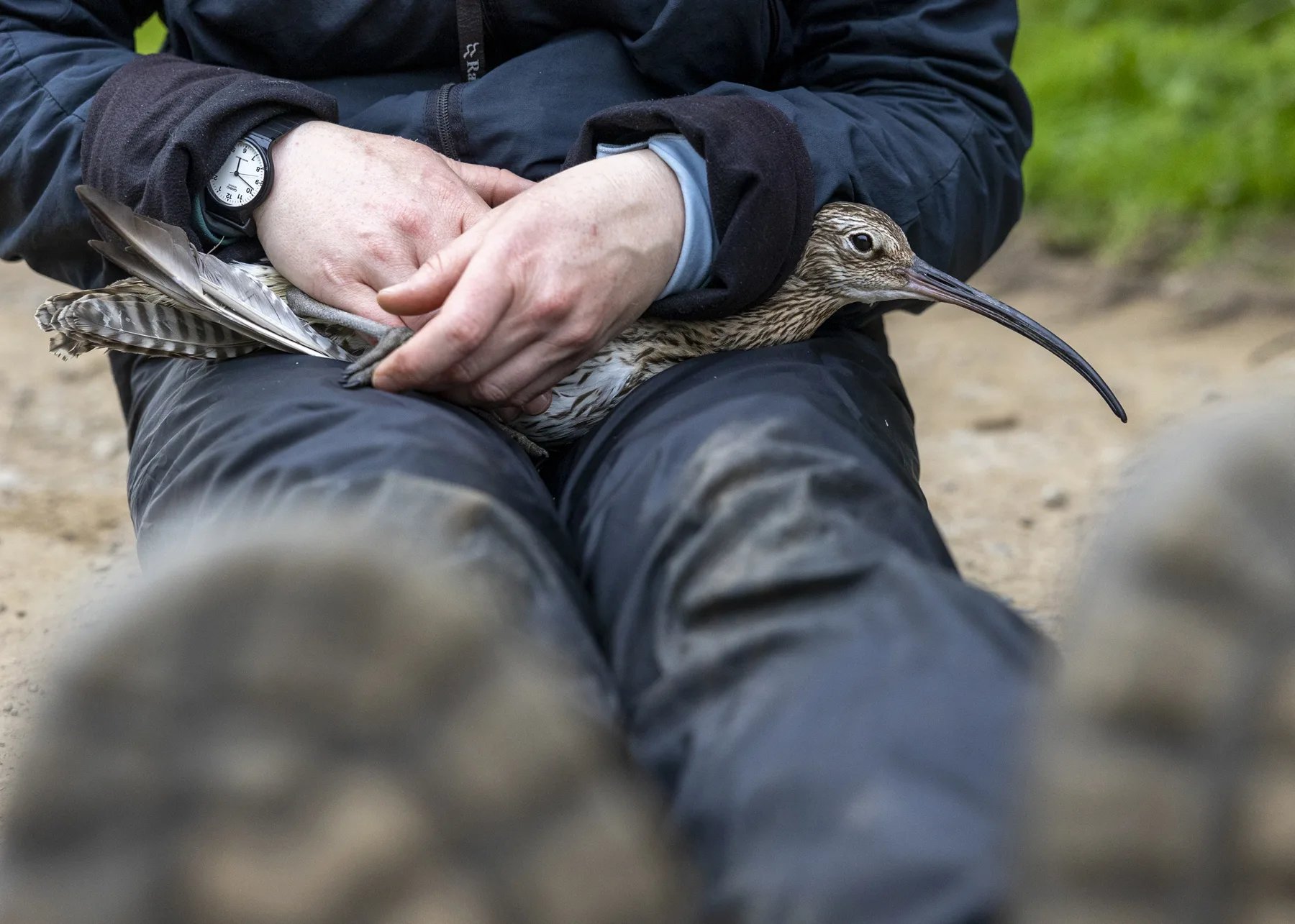
“It’s an ongoing project,” Sam explains, “where the BTO is working with the Yorkshire Dales National Parks Authority to monitor waders in the dales. By GPS tagging curlews breeding in different types of habitats, we’re aiming to find information that we can feed back into improving wildlife-friendly farming measures to help the species’ breeding success.
“In 2015, curlews were added to the ‘Red List’ of the UK’s Conservation Status Report, officially classifying them as an endangered species”
“We tagged the curlews at the beginning of their breeding season, shortly after they arrived back in Yorkshire from wherever they’ve spent the winter,” Sam continues. “They set up a territory, pair up with mates, defend their territory against other pairs, lay a nest, and then incubate their eggs for 30 days. If they get through to raising chicks, that will take them to around the end of June. This whole process coincides with periods of peak farming activity – lambing, grazing cattle, hay cutting – and so by tagging the birds, we can find out if they stay in one field and how big the area they move around in is, allowing farmers to potentially modify their practices so they don’t accidentally mow nests or chicks. We hope that the information gained from the project will feed into new nature-friendly farming policies and decisions, especially as there have been a lot of changes to subsidies given to farmers for nature-friendly farming approaches since the UK has left the EU.”
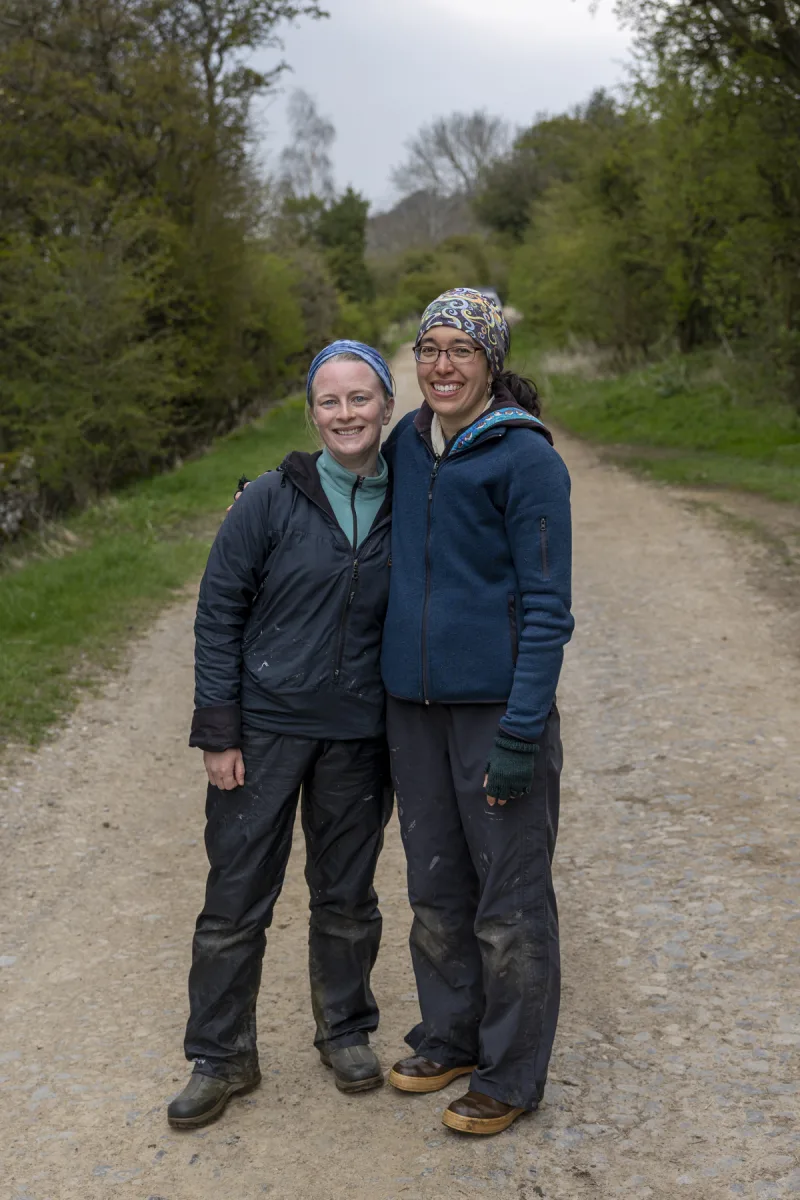
Dr Samantha Franks (r) and Dr Katharine Bowgen (l)
Sam is eager to spotlight the invaluable contribution local Yorkshire landowners made to the project. “Whether it was farmers, gamebird estate managers, or gamekeepers, it was clear to all of us that we were immensely lucky to have the support of locals with both a lot of knowledge and a lot of love for curlews,” she recalls. “We were very grateful to work with people who really cared about breeding waders and wanted to see their fortunes improve. It was also lovely to show them curlews in hand – they often only ever saw them from afar, so they marvelled at seeing the birds up close and in person! We told Rich this when he joined us – we warned him that we couldn’t promise to catch anything on the day he was with us, but we, quite unusually, managed to catch two in that day!”
“We were fortunate to have the support of locals with a lot of knowledge and love for curlews”
For Sam, who grew up in Canada and is currently based in the BTO’s main offices in Norfolk, wildlife has been a lifelong interest. University allowed her to start focusing more generally on birds and since coming to the UK and working with the BTO, she has been able to pursue her love for waders like curlews. “Curlews are almost like the pandas of the bird world,” she laughs, “because they’re just so charismatic! They’re quite big, they have a distinct bill and a very obvious call so people really love them. They’re a very iconic species of the British countryside, and they’re certainly the species I have the most affinity with.”
Photographer Rich Bunce joined the project through his involvement with Curlew Action, a charity set up by author Mary Colwell which aims to give curlews a secure future through supporting conservation efforts, highlighting curlews’ cultural importance, and engaging with science and government policy. A Curlew Action event back in December 2022 enabled Rich to get in touch with Sam and the team at the BTO, who informed him of the upcoming curlew tagging project in the Dales.
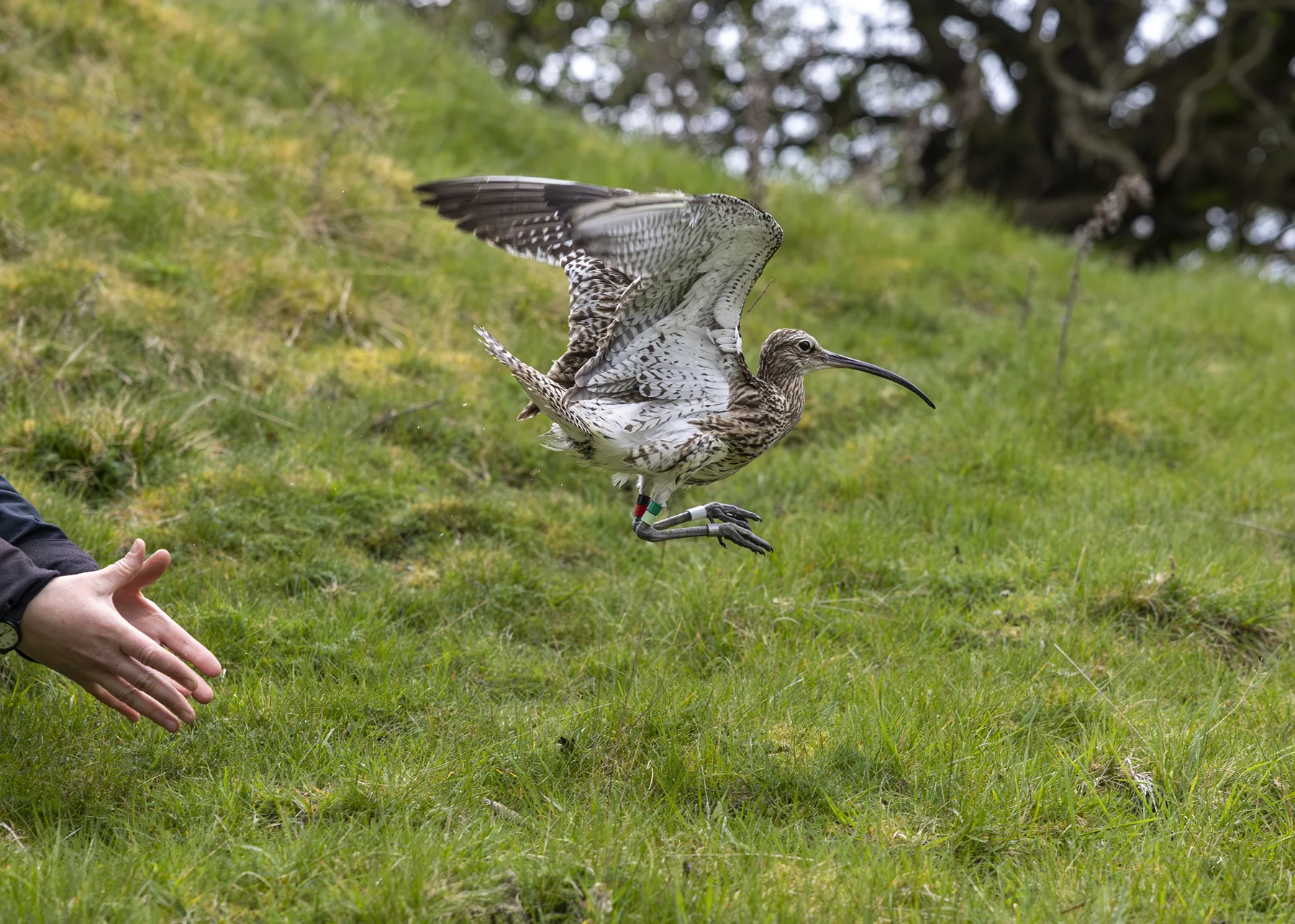
Originally from Kingston upon Thames, Rich first moved up north in 2010, eventually settling in the small West Yorkshire village of Burley in Wharfedale. In 2013, he founded ‘Walking Photography’, a passion project that offers practical photography lessons for people of all abilities and experience levels. “The identity of a walking photographer really appealed to me,” he explains, “as it leaves me the freedom to do what I want. Even though I tend to lean towards nature and wildlife a lot, I don’t feel confined to that category of photography. It’s really freeing.”
Much like Sam’s interest in wildlife, Rich’s passion for photography came at an early age, ever since receiving his first camera bought by his mum from the Avon catalogue. After earning his BA (Hons) in Photography & Digital Imaging, Rich enjoyed much success as a freelance photographer, working with a variety of clients, from small businesses all the way up to slightly more famous clients like M&S and Coca-Cola.
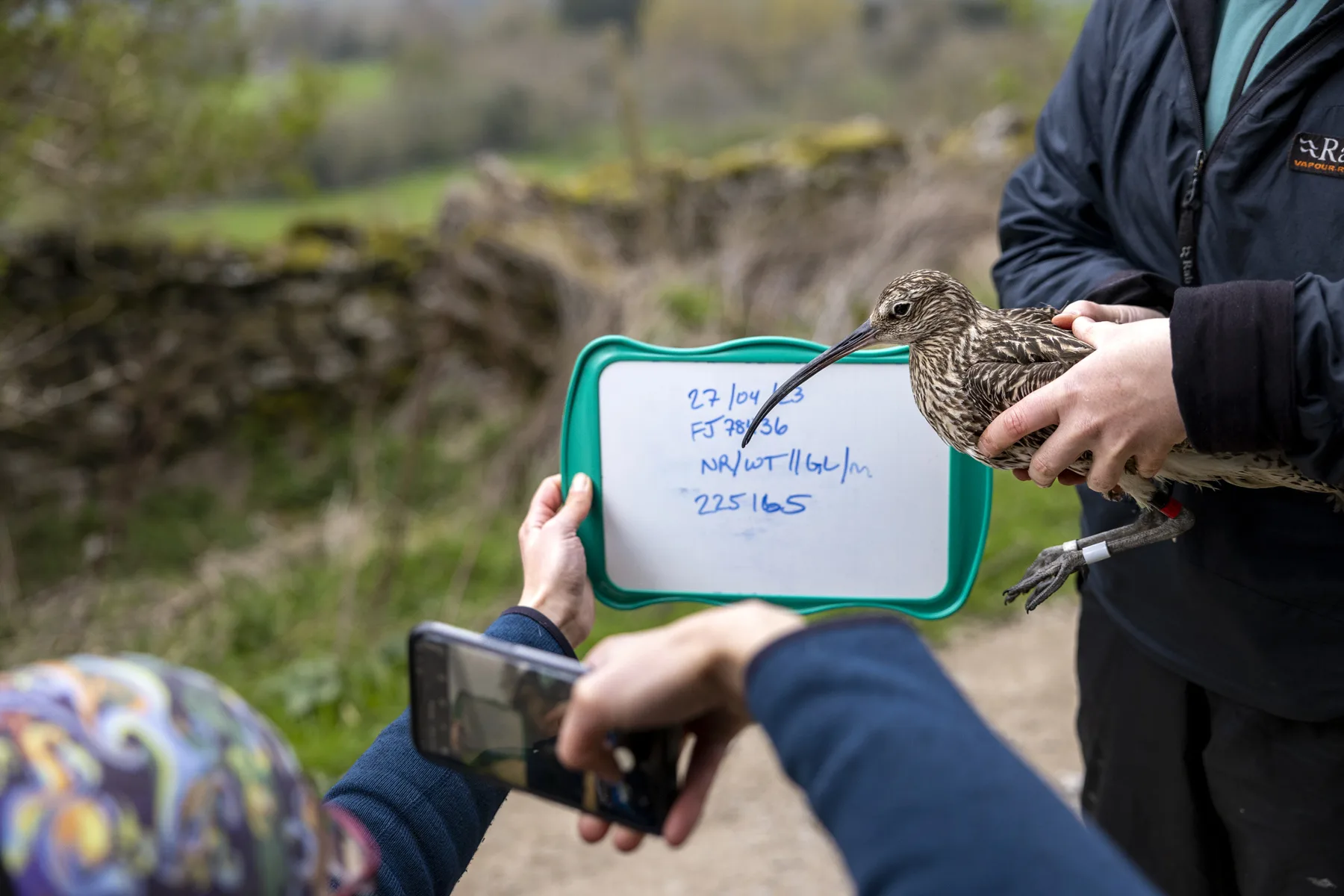
Yet despite this immense success (not to mention his numerous awards and international exhibitions), Rich is keen to emphasise that the quaint world of nature is his major source of inspiration. “I love being outdoors and, from a young age, have been lucky enough to be absorbed in nature. I think that’s what inspired me to do the workshops I offer,” he says, “as I get to combine my passion for photography with my love of nature whilst simultaneously sharing it with others. The workshops have grown a lot in the past 10 years; it’s been really lovely.
“I think we’re really lucky in the UK to be surrounded by such gorgeous scenery,” Rich continues, “We can really immerse ourselves in nature, and it’s just wonderful.” Sam builds on this further, explaining how spreading this love of wildlife and birds to urban areas in particular, is a key focus of the BTO. “We are so lucky in the UK to have so many nature reserves where we can access nature on both a big and small scale – it gives people a really wonderful interest in nature. I’m very fortunate to live in rural Norfolk,” she explains, “where there’s so many birds and so much wildlife on my doorstep, but that’s not always the case for people who live in bigger cities. I know the BTO is working hard to bring this interest in nature to more urban areas, particularly to young people who may not have easy access to these vast areas of wildlife.”
“We are so lucky in the UK to have so many nature reserves where we can access nature on both a big and small scale”
Having recently celebrated its 90th birthday back in July 2023, the BTO is showing no signs of ending its unwavering dedication to researching and implementing methods of conservation for some of the UK’s most endangered bird species. And it is clear that the tireless work of the organisation’s passionate researchers like Sam will lead to many positive developments in the world of bird conservation, with the project back in April in particular hopefully looking to make many invaluable contributions to both improving wildlife-friendly farming measures and to helping to slow the decline of curlews in and around the Dales.
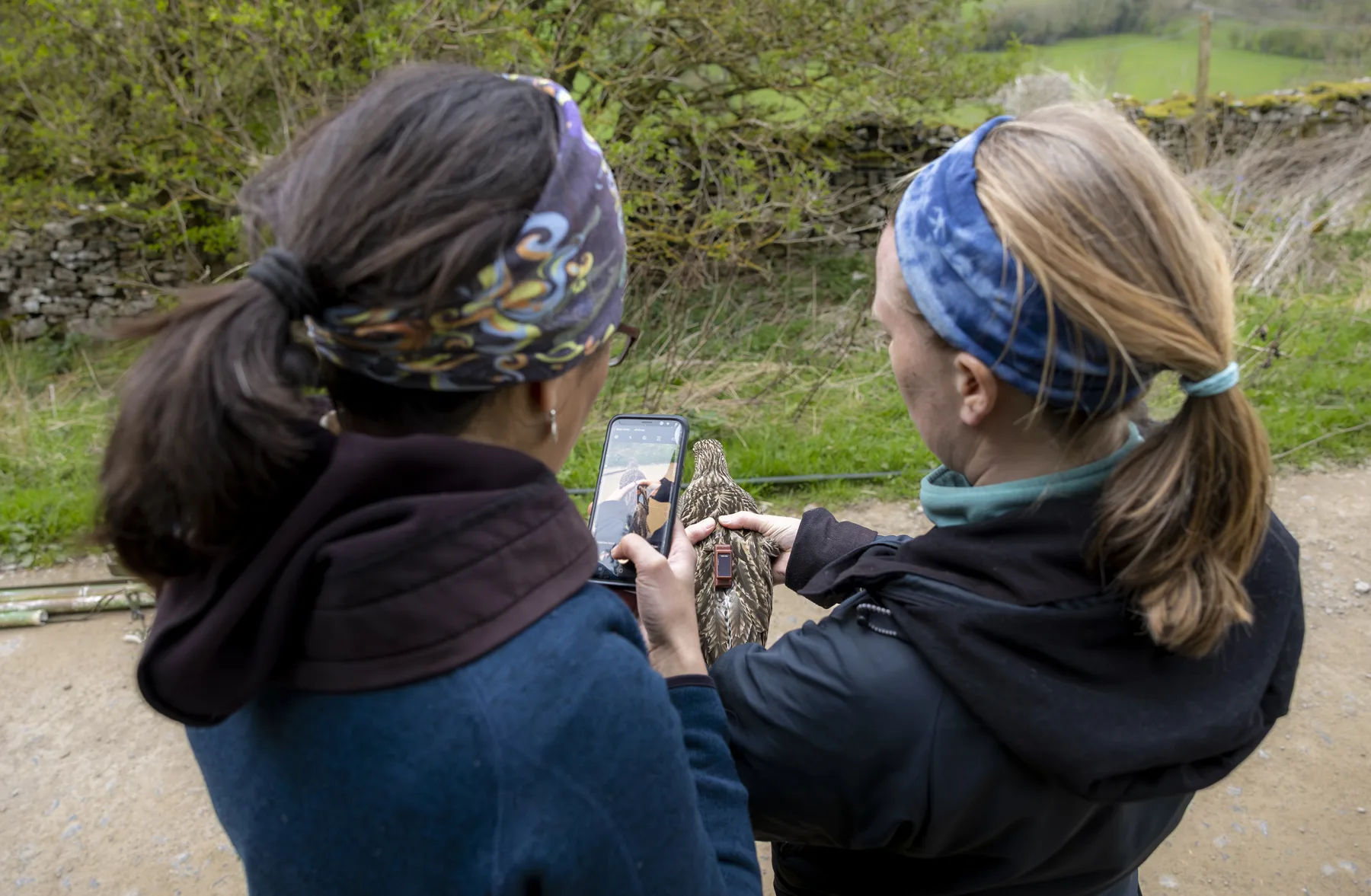
To find out more about the walks and workshops Rich offers, visit his online webpage at walking.photography. Or, to learn more about curlews and to keep up with any future updates on the BTO’s many ongoing bird conservation projects, visit either curlewaction.org or the central BTO website, bto.org
NorthernLife Sept/Oct 2023




